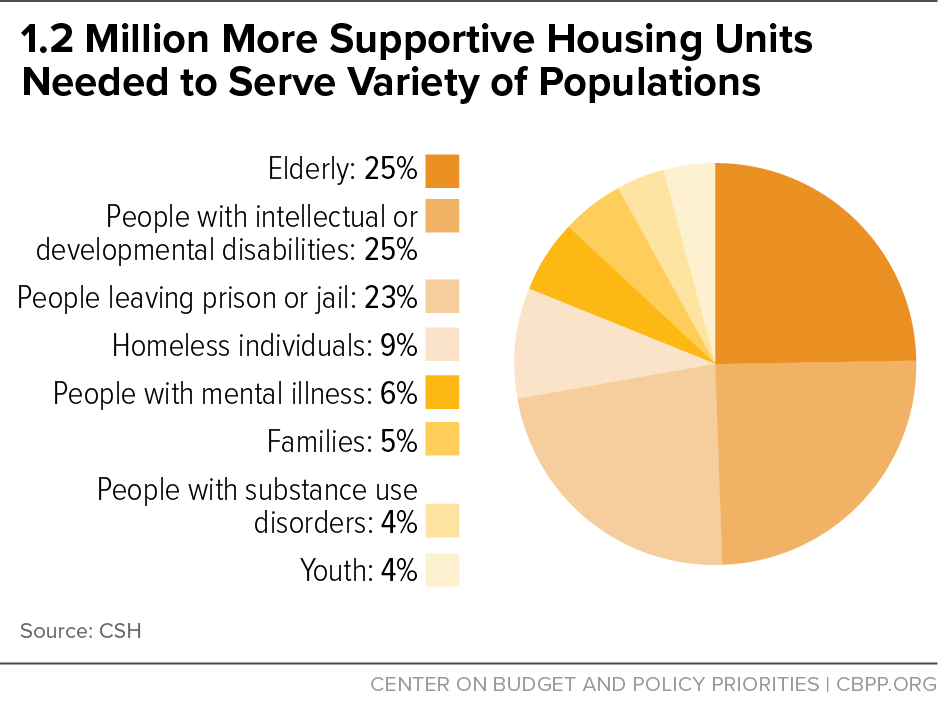BEYOND THE NUMBERS
Housing Vouchers Work: Providing Supportive Housing for Particularly Vulnerable People
This is the next post in our “Housing Vouchers Work” blog series, which provides the latest facts and figures about the Housing Choice Voucher program, the largest rental assistance program to help families with children, working people, seniors, and people with disabilities afford decent, stable housing.
Combining housing vouchers with health care and other services is a proven way to create homes in the community for people with histories of homelessness or institutionalization who also live with chronic, often disabling, health conditions. CSH (formerly the Corporation for Supportive Housing) estimates that 1.2 million additional supportive housing units are needed to serve this population (see chart). Without added federal funding for housing vouchers, nationwide efforts to end chronic homelessness and reduce the number of people institutionalized in mental health facilities, nursing homes, and jails will stall.
Supportive housing couples affordable housing (usually a voucher that covers the gap between the rent of a modest unit and what tenants can afford to pay) with health care services and case management for people with complex health and other needs. People live independently, and a case manager coordinates their medical appointments and helps them get services such as employment assistance or parenting classes, manage behavioral health illnesses, and address personal crises. The goal is to keep the person housed, out of expensive institutions, and engaged with services of their choice.
Supportive housing works. Studies show that local programs keep at least 75 percent of those who enter supportive housing from returning to homelessness. And, when targeted to high-cost, high-need people, supportive housing reduces health costs by keeping people out of hospitals, emergency rooms, and nursing homes. In Chicago alone, supportive housing reduced costs for high utilizers of hospitals who also were homeless by $6,000 per person per year.
Vouchers used in supportive housing have also reduced homelessness among veterans. The Veterans Affairs Supportive Housing (VASH) program, which pairs vouchers with VA-provided services for veterans experiencing chronic homelessness, contributed to a 47 percent drop in veterans’ homelessness between 2010 and 2016. VASH and other forms of federal rental assistance help about 340,000 veteran families, many of whom live in designated supportive housing apartments.
Other federal and state programs provide some rental assistance for supportive housing. But overwhelmingly, the 1.2 million additional people who need supportive housing will need a voucher to thrive.

